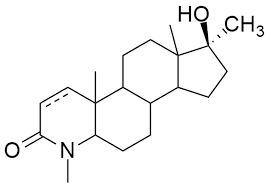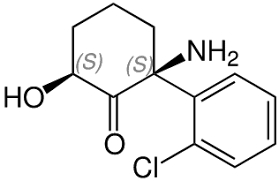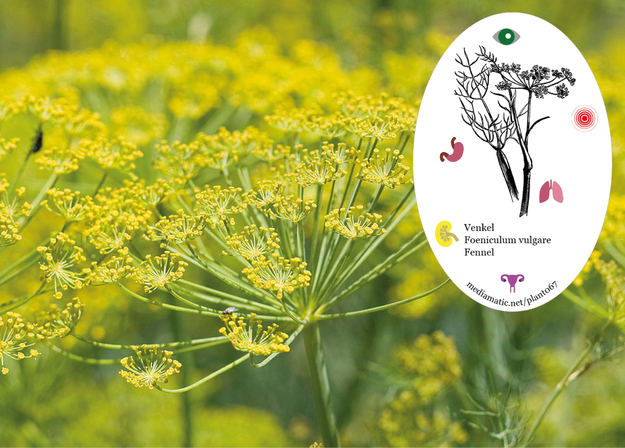What is phytoestrogen?
It is a plant-based estrogen molecule, also called a xenoestrogen, meaning it is produced outside the endocrine system. ‘Phytoestrogen’ originates from the Greek word phyto meaning ‘plant’ and estrogen, the hormone which controls the female reproductive system and fertility. Its molecular structure and weight allows it to mimic and replace estrogen molecules in the human body by attaching itself to estrogen receptors. However, they are not identical (see images below of their molecular structures); phytoestrogens are said to be less potent compared to naturally occurring estrogen molecules.
Estrogen molecule - https://commons.wikimedia.org/wiki/File:US7605152.png

How phytoestrogen works:
There are two types of estrogen receptors - alpha (ER-α) and beta (ER-β) - to which the molecule can bind to (although estrogen molecules tend to have a higher affinity for the ER-β receptors). Phytoestrogen molecules can latch onto these receptors as they have a phenolic ring at the ‘receptor binding site’, similar in shape to the estrogen molecule (see image above). In addition to their structural similarities, both estrogen and phytoestrogen have a comparable molecular weight, contributing to their interchangeability in the human body. When phytoestrogen binds to an original estrogen receptor, this occupies the receptor and leads to its ‘inactive’ form. Depending on the levels of both phytoestrogen and estrogen present in the body, releasing a chain reaction, either increasing or decreasing the bioavailability of the androgen-binding proteins. Phytoestrogens are known as endocrine disruptors, they can both stimulate and impede the natural production of estrogen in the body. They are used to balance estrogenic and antiestrogenic effects depending on the body’s needs.
Consuming products containing these phytoestrogens in high levels can cause the bioavailability of the receptors to decrease as they are being occupied by more phytoestrogen and creating an unbalanced hormonal change and potentially a build-up of estrogen molecules in the bloodstream. This mechanism can be helpful if one’s estrogen levels are morbidly low, for example, during menopause.
Fennel and phytoestrogen:
Many plants contain this hormone such as carrots, soy based foods, yams, rice, whole and dried grains, red clover, and fennel. Our focus is on the fennel plant as it is a commonly used legume with many medicinal properties and every part of it is edible from root to seed! This beautiful bulbous plant belongs to the Apiaceae family and is closely related to celery and carrots.
How you can use fennel for your health: (always consult a doctors for medical use)
Fennel has many beneficial medicinal properties specifically related to the female reproductive system, due to the presence of phytoestrogen, as mentioned in an article published in 2019 by Mohaddese Mahboubi “The beneficial effects of fennel oil or extracts in gynecological problems of women are related to its phytoestrogen compounds such as diosgenin”. Some ways to use the phytoestrogen in fennel is as an extract “fennel ethanol extract 5% at concentration of 46 mg every 6 hour has good efficacy in treatment of vaginal atrophy”, or as an oil “fennel essential oil at a dose of 30 mg (15–30 drops), two or three times in a day” which is said to alleviate some clinical PMS symptoms such as pain, anxiety and depression (Mahboubi, 2019). It can even be used as a tea, “5 [grams of] dried fruit in 130 mL boiled water” as suggested by Mohaddese Mahboubi.
Risks and benefits of phytoestrogen:
Unless one is pregnant or has a medical condition which can be aggravated by a certain food, most plants that contain phytoestrogen will not pose any risk when consuming them. It also becomes unwise to ingest isolated phytoestrogen in large quantities as this is a synthetic/man-made process which does not correlate to the way our own body digests the natural herb or vegetable containing phytoestrogen. Phytoestrogen molecules are about 1/400 to 1/1000 less potent than the naturally occurring estrogen, and there has been limited research into its effectiveness or potential harms as a result. The studies conducted on the effects of plant based hormones cannot establish a cauzational link between, for example, phytoestrogen and the health improvements. Generally it is difficult to conduct an experiment regarding most herbal remedies as they are not subjected to the same manufacturing and standardization processes as certified medications are.
Concluding remarks:
Adding phytoestrogens to your diet can alleviate pain and help balance out hormones. However, using phytoestrogens for medical purposes, such as to combat menopausal symptoms, is not without risk and it is always recommended to ask your doctor first for the correct dosage and frequency of use to avoid any negative side effects. There is no need to be adding supplements into your diet. This runs the risk of overconsumption of phytoestrogen and disrupting the natural production of the estrogen hormone.
For many reasons, fennel is a perfect vegetable and is often underrated... For one, every part of the plant is edible (and tasty!) from the bulb to the fantastic yellow flowers it blossoms. This plant’s bulb can be eaten raw or cooked, its seeds can be dried and eaten or used to make an extract or an oil, its thin wispy herbs can be used fresh or dried and used for seasoning. The possibilities are endless. The plant also has a variety of health benefits in addition to the topic of this blog, such as on the digestive system, the urinary tract, eye health, cardiovascular health and a natural painkiller.
Looking for tasty ways to incorporate fennel into your meals? Check out ‘Jekka’s herb cookbook’ by Jekka McVicar for a fresh fennel salad or make some delicious gut healthy pickles!
Disclaimer:
We are only providing some general information about alternative plant-based medicine. We cannot guarantee any particular results as each circumstance is subjective and dependent on your personal situation. This blog states only our personal opinions and recounts the research we have gathered on the topic.
Please check with your personal physician, a medical herbalist or another medical professional about any treatment related to your health.
